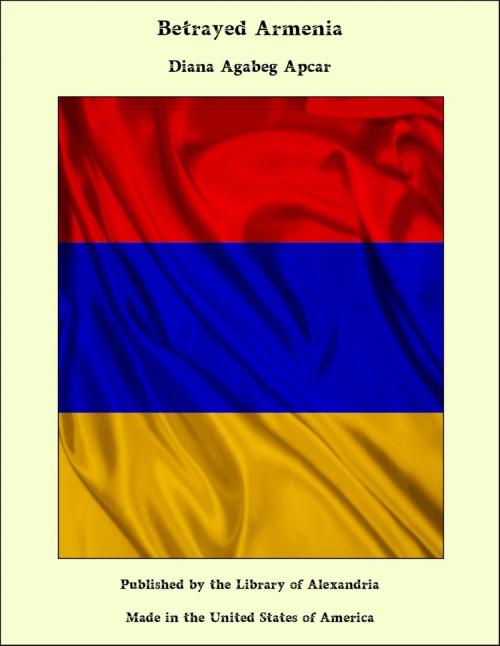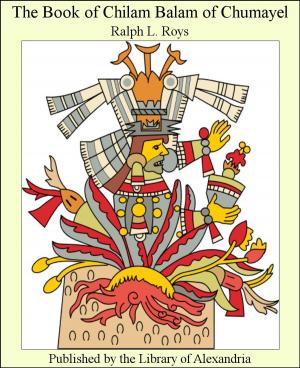| Author: | Diana Agabeg Apcar | ISBN: | 9781465610614 |
| Publisher: | Library of Alexandria | Publication: | March 8, 2015 |
| Imprint: | Language: | English |
| Author: | Diana Agabeg Apcar |
| ISBN: | 9781465610614 |
| Publisher: | Library of Alexandria |
| Publication: | March 8, 2015 |
| Imprint: | |
| Language: | English |
Every time that I hear the name Armenian I feel the bleeding of a moral wound within me. It was the year I was sent into exile (1896). On a Thursday, before we had left the Military School for our vacation, a rumor flew through the school,—“They are massacring the Armenians.” All my young patriotic companions turned pale from deep emotion. Every one tried to read in the sad faces of others the reason for this bad news. But each one avoided expressing his thought. After a time the details began to circulate to the effect that the Armenians had dared to destroy the Ottoman Bank and government buildings with bombs, and that this was the reason why they were massacred. At that time all of us trembled, because we also were enemies of that government, because we also wished to overthrow it, and although we were not convinced that the best service could be rendered by bombs, we were working quietly to spread our ideas. In our hearts a flame of enmity and indignation, no less terrible than bombs, was burning. The poor Armenians were being massacred ruthlessly, because out of their number five or ten persons, resenting their wrongs, had rebelled. But that which maddened these poor men, that drove them to rebellion and placed bombs in their hands was the stupidity of the people and the outrageous oppressions of the government. And now this inhuman government was killing with clubs a noble nation, under the pretext of putting down a rebellion produced by its own oppressions. Among the crimes committed by the former government the most unpardonable crime was the Armenian massacre. If there was a race up to that time among non-Moslem peoples which with sincere and deep feeling honored the Ottoman fatherland that race was the Armenian. It is the Armenians who wear most nearly the national dress, who speak and write Turkish best, and recognize the Ottoman country as their fatherland. Besides this it is the Armenians who engage in commerce and agriculture, and thus, by demonstrating its fruitfulness, increase the value of the Ottoman Empire. Because a few among them justly started an agitation, these our noble and industrious brethren were being massacred. What a terrible scene! When we left the school building we saw hundreds of the bodies of our Armenian compatriots being removed in manure carts; legs and arms were hanging down outside. This bloody scene will ever remain impressed on my mind.
Every time that I hear the name Armenian I feel the bleeding of a moral wound within me. It was the year I was sent into exile (1896). On a Thursday, before we had left the Military School for our vacation, a rumor flew through the school,—“They are massacring the Armenians.” All my young patriotic companions turned pale from deep emotion. Every one tried to read in the sad faces of others the reason for this bad news. But each one avoided expressing his thought. After a time the details began to circulate to the effect that the Armenians had dared to destroy the Ottoman Bank and government buildings with bombs, and that this was the reason why they were massacred. At that time all of us trembled, because we also were enemies of that government, because we also wished to overthrow it, and although we were not convinced that the best service could be rendered by bombs, we were working quietly to spread our ideas. In our hearts a flame of enmity and indignation, no less terrible than bombs, was burning. The poor Armenians were being massacred ruthlessly, because out of their number five or ten persons, resenting their wrongs, had rebelled. But that which maddened these poor men, that drove them to rebellion and placed bombs in their hands was the stupidity of the people and the outrageous oppressions of the government. And now this inhuman government was killing with clubs a noble nation, under the pretext of putting down a rebellion produced by its own oppressions. Among the crimes committed by the former government the most unpardonable crime was the Armenian massacre. If there was a race up to that time among non-Moslem peoples which with sincere and deep feeling honored the Ottoman fatherland that race was the Armenian. It is the Armenians who wear most nearly the national dress, who speak and write Turkish best, and recognize the Ottoman country as their fatherland. Besides this it is the Armenians who engage in commerce and agriculture, and thus, by demonstrating its fruitfulness, increase the value of the Ottoman Empire. Because a few among them justly started an agitation, these our noble and industrious brethren were being massacred. What a terrible scene! When we left the school building we saw hundreds of the bodies of our Armenian compatriots being removed in manure carts; legs and arms were hanging down outside. This bloody scene will ever remain impressed on my mind.















